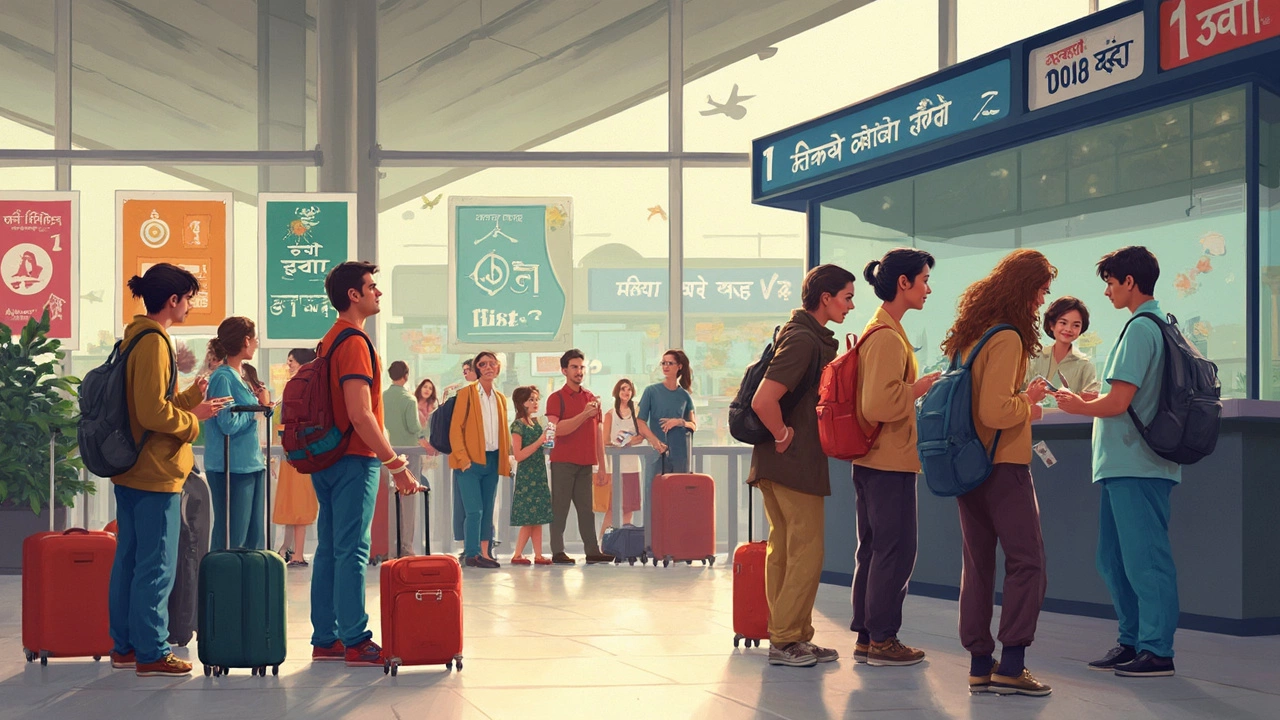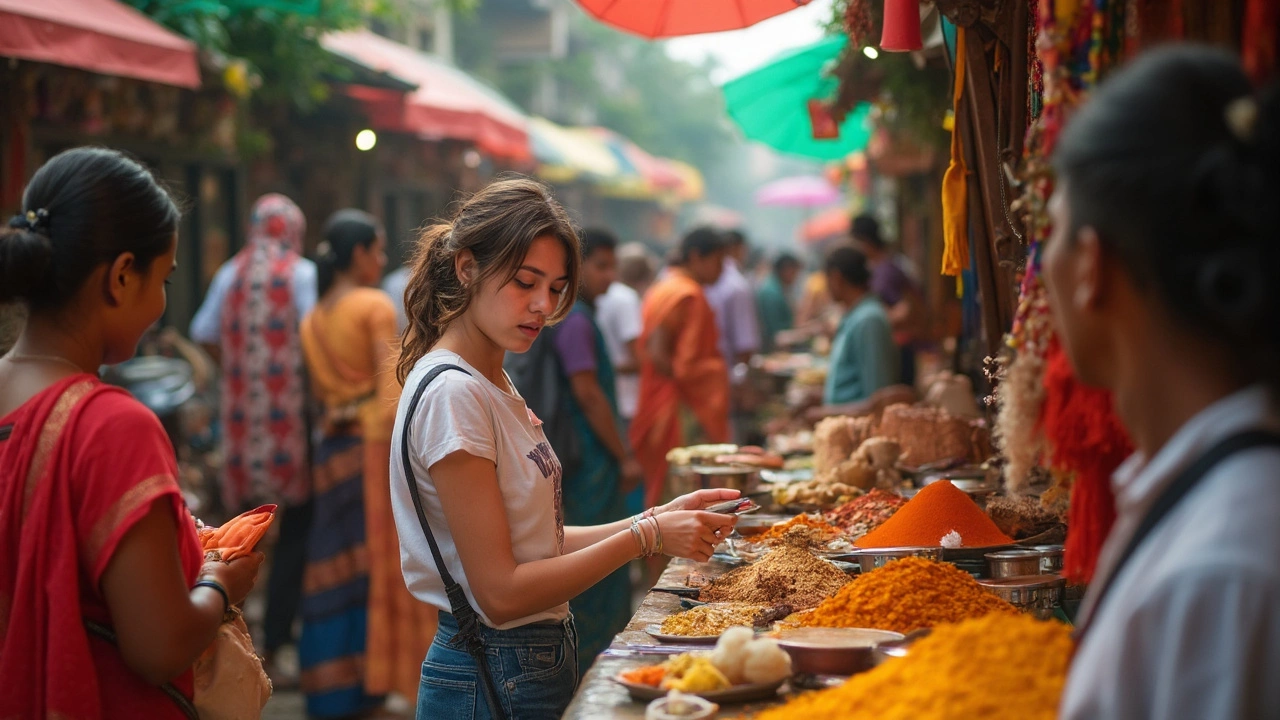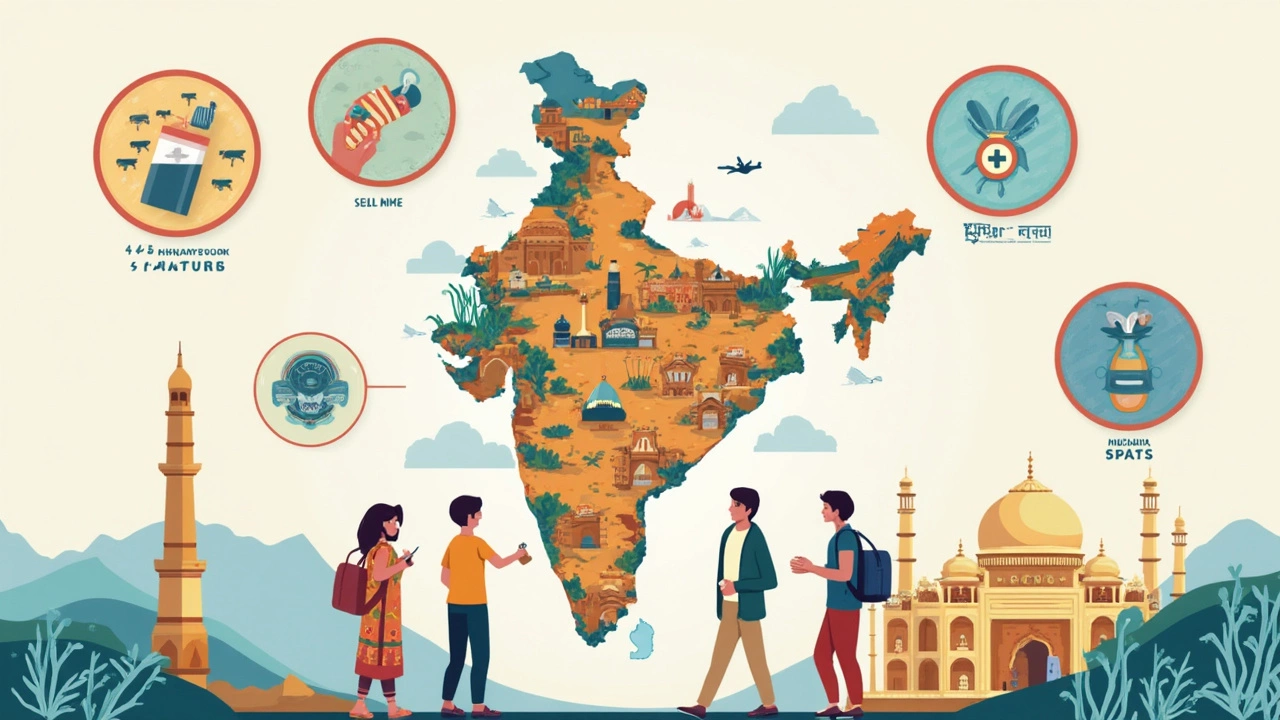India Travel Vaccinations: What You Really Need to Know Before You Go
 Jun, 29 2025
Jun, 29 2025
If you’ve ever thought about ticking off an Indian train ride from your bucket list, you’ve probably heard wildly different opinions about travel vaccines. One buddy swears by a full pre-trip cocktail. Another claims he ate street samosas for months without so much as a sniffle. So—who’s right? Is this just clever marketing by clinics, or do you actually need to arm your body before landing in Mumbai or Delhi?
What Are the Real Risks? Busting Myths and Sharing Facts about India’s Diseases
India isn’t all tuk-tuks, spice markets, and Bollywood sets. It’s home to more than a billion people, endless climates, and some infectious bugs that just aren’t an issue back in Canada or Europe. Did you know that, according to the World Health Organization, India still reports tens of thousands of typhoid and hepatitis A cases every year? The country fights malaria in several regions, and dengue fever makes regular appearances in both cities and the countryside.
But here’s where things get misunderstood. You don’t face the same risk everywhere you go. While major cities like Mumbai and Bengaluru have modern hospitals and plenty of westerners, some rural areas still struggle with outbreaks that barely hit the news back home. So, what’s the real danger? Think of it like this: you’re only as safe as your hygiene, food choices, and, yes, your immune defenses. The local kid selling chai isn’t worried about hepatitis A, but without childhood exposure, your stomach might turn at the smallest microbe.
Let’s get specific. The so-called Big Four for India-bound travelers are hepatitis A, typhoid, tetanus, and rabies. Hepatitis B is also a smart move, especially if there’s any chance of getting medical treatment abroad—not just in India. Malaria isn’t everywhere, but it spikes during monsoon in spots like Assam or Goa. Japanese encephalitis? Only a concern if you’re rural, staying long-term, or constantly outdoors, especially during mosquito season. And don’t shrug off rabies because “dogs look friendly.” India actually leads the world in human rabies deaths. The scariest part? You sometimes have days, not weeks, to get post-bite vaccines.
What about COVID-19? As of 2025, India has mostly rolled back strict requirements, but major airlines still ask for vaccination proof. The more pressing worries lie with diseases that don’t make breaking news every day, but can absolutely wreck your trip.
Feeling overwhelmed? It can seem like you’ll need a dozen shots just to try street food safely. But if you break it down by region, travel style, and your own health, the real must-haves get obvious. For typical trips (think Golden Triangle, Kerala, or northern Himalayas), hepatitis A and typhoid are non-negotiable. If you’re heading rural, add rabies and consider Japanese encephalitis—especially if you’re volunteering or working with animals. Vaccinations for India aren’t a scare tactic, they’re about keeping your memories happy and your toilets unvisited at odd hours of the night.
| Disease | Vaccine Needed? | Risk Areas | Notes |
|---|---|---|---|
| Hepatitis A | Yes | Entire country | Spread by food and water; very common |
| Typhoid | Yes | Entire country | Especially if eating street food or raw produce |
| Tetanus | Yes | Everywhere | Make sure standard boosters are updated |
| Rabies | Consider | Rural areas and all cities | Risk with dogs, monkeys, bats; hard to get post-bite shots |
| Hepatitis B | Yes | Entire country | If medical care possible or <18/never vaccinated |
| Malaria | Yes/No | East, NE, Central India; monsoon months | Not all regions; mosquitos worse June-Oct |
| Japanese Encephalitis | Rare | Villages, rice fields, long stays | For rural or long-term travelers |
| Covid-19 | Required for some airlines | Main airports | Carry digital proof just in case |

Choosing Your Vaccines: Personalizing Your Prep Like a Local (or a Savvy Traveler)
So you want to smartly tailor your vaccines without blowing your budget on unnecessary shots. Here’s some real talk from travel doctors and seasoned India explorers who know what actually happens on the road. Nobody wants to stand in a clinic for hours if a simple pill or shot can save your whole adventure.
First, look at your itinerary like a detective. Are you just popping into major cities for work or comfortable tours? Then focus on food-and-water diseases: hepatitis A and typhoid. Ask your local healthcare provider if your tetanus shot’s up to date (it’s usually part of your standard childhood shots, but the booster should be within 10 years).
Are you heading off the beaten path? Small villages, trekking, volunteering with animals, or couchsurfing? You’re in rabies territory. In India, street dogs aren’t always vaccinated, and even monkeys in tourist spots like Jaipur or Rishikesh have been known to bite. If you can’t immediately get to a major hospital, a rabies pre-exposure series could save your life—and save you precious time getting post-bite shots. Canadians, by the way, love to downplay this one until they see how many dogs are everywhere.
Traveling with kids? Their immune systems are less street-smart than grown adults, and kids are way more likely to mess with animals. Double-check immunizations for them with your pediatrician, or a travel medical clinic used to family trips.
Now, let’s talk malaria. The risk’s real in places like rural Assam, Chhattisgarh, or Orissa, especially in monsoon. Luckily, India’s big tourist circuit (Delhi, Mumbai, Rajasthan, Kerala) isn’t high risk for most short-term visitors, though you’ll want to bring mosquito repellant anyway. If your plans change, get a doctor’s script for anti-malarial meds, are easy to pack, and some even double as protection for other tropical diseases.
Here’s where people mess up: don’t just Google what shots “might” be needed. Get personal advice. An actual travel doctor will ask about your time in India, medical history, allergies, and plans. They help you dodge “shot fatigue” and side effects from unnecessary boosters. Indian clinics tend to be thorough, but English isn’t always spoken outside big cities—I learned the hard way after a chai-fueled night in Goa resulted in some seriously confusing pharmacy charades.
So, how soon do you need to start planning? Aim for 6-8 weeks before departure for most shots (hepatitis A and B require two or three rounds). Last-minute traveler? At least get the basics, even if it’s only a couple days before your flight. Some protection is better than none.
Oh, and bring vaccination records with you, digitally and on paper. Indian border staff might not ask, but your airline or a local doctor could. City-based private hospitals are top-of-the-line, but remote villages expect you to have your own history. In short: think like someone who wants to binge local food and see temples, but doesn’t want to gamble on an IV drip or overnight hospital stay.

Surprising Tips and Real-World Experiences from Recent India Travelers
I’ve heard some hilarious—and terrifying—stories over coffee in Vancouver after friends’ India trips. There was Rachel, who had every vaccine under the sun but skipped malaria pills for Goa and ended up spending three days in bed with fever. Or Alex, who thought hand sanitizer was enough prep and ended up with a “Delhi belly” so bad he abandoned street food forever. If you want to enjoy cheap eats without regrets, listen up.
First rule: Clean food, bottled water, and proper hand washing beat any list of vaccines. No shot will fully save you from a dodgy pani puri stall. Stick with hot food, busy street vendors (locals eat there for a reason), and always check for sealed bottles. Watch out for monkeys in touristy areas—they’ll swipe more than your snacks if you’re not paying attention.
If you can only pick a few vaccines, hepatitis A and typhoid have the highest payoff. Tetanus is a no-brainer—scraped knees or minor cuts are super common if you’re wandering old ruins or city alleyways. If rabies seems overkill, ask yourself: “Would I rather pay for three quick shots now, or spend days in a foreign hospital after a dog nip?” Monkeys in Agra don’t joke around. Also: some clinics in India might run out of rabies doses during a local outbreak, and the nearest reliable hospital could be hours away.
Is it expensive? In Canada, some shots like hepatitis B are covered by health plans or offered in schools. Most travel vaccines aren’t, so expect $50–$150 per shot in private clinics. But a ruined trip—or a real health scare back home—costs way more. If you’re on a tight budget, focus on the most likely threats, like hepatitis A and typhoid, and consider riskier choices (like skipping rabies) only with a promise to avoid all animal contact.
Don’t forget about insurance. Some travel insurance won’t cover you for diseases you could have been vaccinated against, so read the fine print or ask your agent. “Pre-existing conditions” sometimes include “vaccine-preventable” illnesses if you decline recommended shots—no joke.
For a smoother trip, download the ‘Aarogya Setu’ app (India’s official health & travel advisory tool), which posts outbreaks and health alerts in real time. Also, consider carrying a basic travel medical kit: plasters, oral rehydration sachets, antibacterial ointment, and copies of prescription meds. This way, you’re ready for everyday accidents—and anything less common that might pop up.
Is all of this a hassle for a two-week tour? Maybe. But missing the Taj Mahal for a preventable tummy bug or spending Lunar New Year in a Delhi ER is way more of a downer. Vaccines let you focus on India’s chaos, colors, and crazy street food adventures—minus the worst-case scenario hangover.
- Research destinations and time of year for localized risks
- Book a travel medical consultation with your family doctor or travel clinic
- Carry a digital and hard-copy record of vaccinations
- Stick to filtered or bottled water, and hot, fresh food
- Pack a basic health kit, including rehydration salts
- Sign up for travel advisories—sometimes outbreaks don’t make the news at home
Nobody wants to be that guy holding up the tour bus with stomach trouble, or calling their mom from a hospital bed. A few simple shots and mindful habits mean you get to talk about how you beat the heat, braved the spice—and lived to tell the tale, with only great stories (not sick-day regrets) to remember.